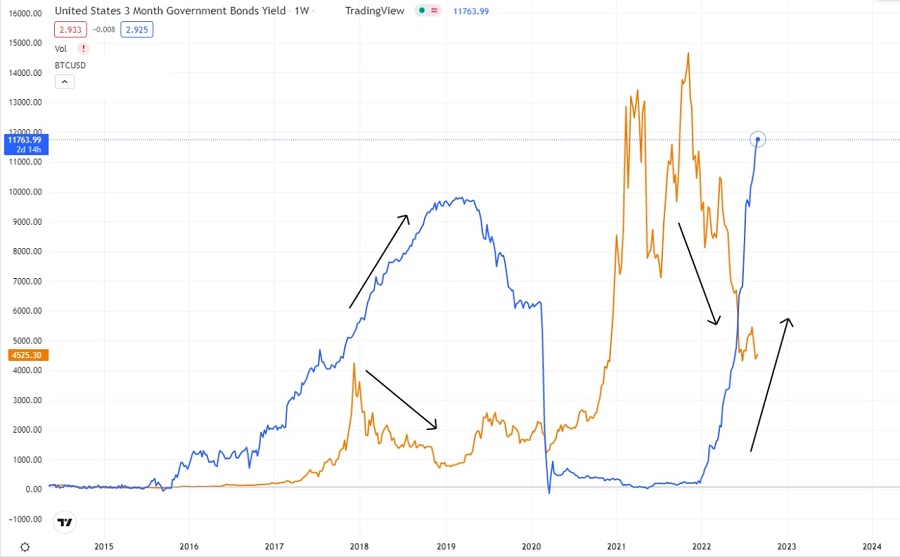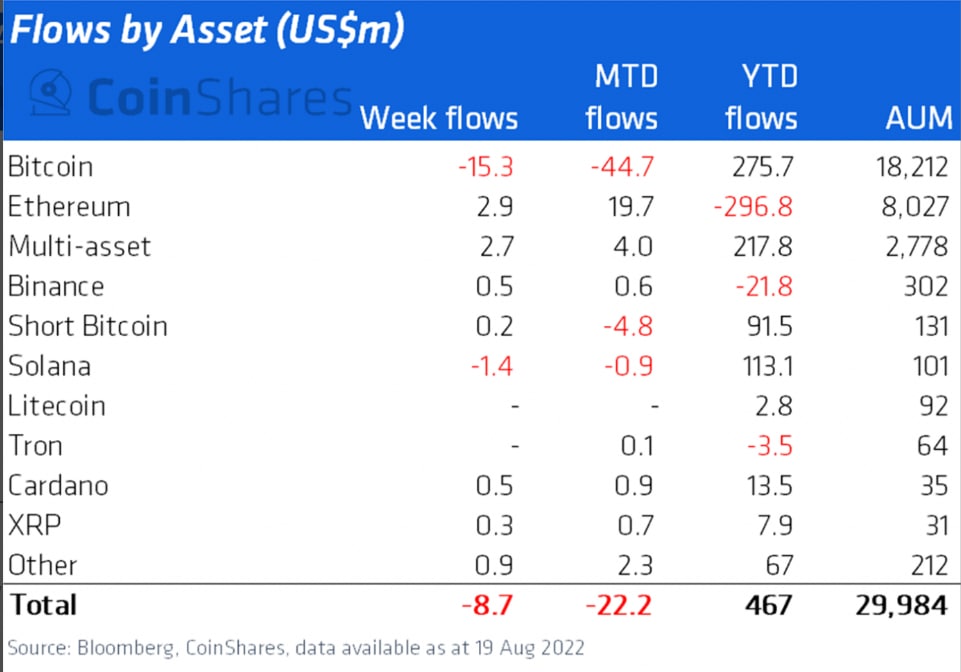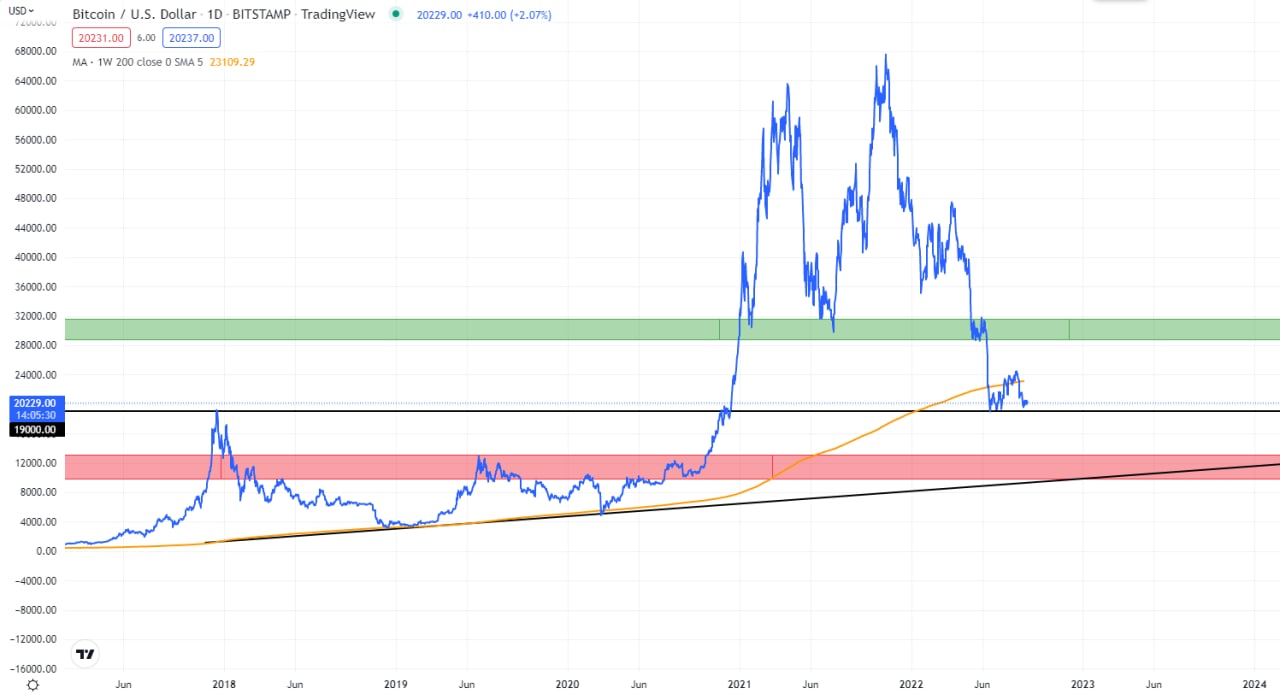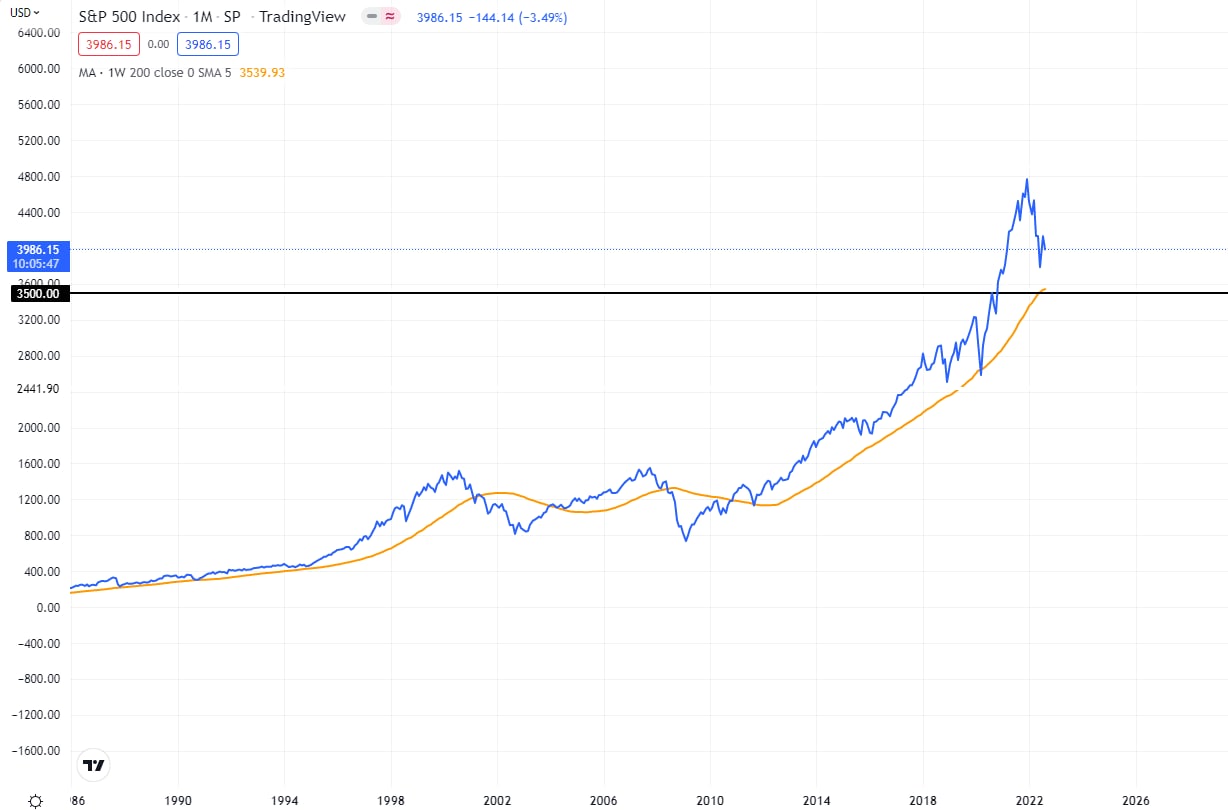
Bearish Scenario: Sales below 5220... Bullish Scenario: Buys above 5225 (if price fails to break below decisively) ...
2022-12-15 • Updated
Warren Buffett, the American businessman and philanthropist, has put most of Berkshire Hathaway’s cash in short-term United States Treasury bills since they offer as much as 3.43% in yields.
Another famous trader, Michael Burry, also bets against risk assets. His Scion Asset Management Fund has released transaction data for the Q2 of 2022. Burry sold all the securities in the portfolio and bought only shares of the real estate fund (REIT) Geo Group, which invests in private prisons worldwide.
This news signal the negative mood of major investors regarding risky assets. Moreover, based on their actions, we can assume that the worst for the stock market and cryptocurrencies is yet to come.
Treasury bills, or T-bills, are US government-backed securities that mature in less than a year. Investors prefer them over money-market funds and certificates of deposit because of their tax benefits.
Berkshire’s net cash was $105 billion as of June 30, out of which $75 billion, or 60%, was held in T-bills.
The move is likely a response to bond yields jumping massively since August 2021 in the wake of the Federal Reserve’s hawkish policies aimed at curbing inflation, which was running at 8.4% in July.

US 3-month bond yield versus BTCUSD weekly timeframe chart. Source: TradingView
Meanwhile, non-yielding assets like gold and Bitcoin have dropped roughly 5.3% and 63% since August 2021. S&P 500 (US500) declined by 12% in the same period.
Such a difference in performance presents T-bills as an ultra-safe alternative for investors compared with gold, Bitcoin, and stocks. Buffett’s T-bill strategy also suggests a bet on more downside for risk-on assets in the near term as the Fed promises more rate hikes in the near term.
The problem is that Michael Burry and Warren Buffet publish their traders, allowing their small traders to follow their decisions. This fact may indicate that retail investors might get rid of risky assets over the following months in favor of 3% in yields.
Moreover, in the current market sentiment, large investors who oppose risks, such as pension funds and hedge funds, will bypass risky assets and give preference to yield assets. It will continue to put significant pressure on the price of risky assets and force the most impatient investors to close positions at a loss.
This fact is confirmed by the performance of Bitcoin-focused investment funds in August, with capital outflows for three weeks, including a $15.3 million exit in the week ending August 19.

Unfortunately for crypto fans, Bitcoin won’t make any reverse until the Federal Reserve gives any hints regarding the monetary policy easing. At the Jackson Hole Symposium, Jerome Powell stated that the rates would go up until inflation hit the targeted 2%.
Moreover, in June, Powell stated a possible easing might start in 2024, which matches with Bitcoin halving, an event where mining rewards are cut in half. Usually, Bitcoin starts a new cycle of growth right after this event.
BTCUSD, daily chart

BTCUSD is trading between the historic support level of $19 000, a 2017 all-time high, and the 200-week moving average, which traders always treated as the main support. However, as we can notice, the price broke below the moving average, which now acts as a phycological resistance.
If buyers push the price above this line, they might pump it to 28 000 – 32 000 resistance level, which might be quite hard in the current market conditions.
The more realistic variant is the decline below 19 000 and further drop towards the range between 9000 and 13 000. In this case, the price will touch a global trendline and start a new growth cycle.
S&P500 (US500), monthly chart

As we can notice, US500 loves to flirt with the 50-week moving average. We can notice that both times, in 2001 and 2008, the US economy entered a significant financial crisis after the breakout of this support line. Therefore, there is no doubt that US500 will reach the range of 3500 – 3600, where the future of the whole US economy will be decided.
Do you want to get updates Live? Subscribe to the @FBSAnalytics Telegram Channel, where I post more daily trade ideas!

Bearish Scenario: Sales below 5220... Bullish Scenario: Buys above 5225 (if price fails to break below decisively) ...

After creating record highs, Wall Street's main indexes opened on Wednesday and began to edge lower, reflecting cautious sentiment among investors. They're eagerly awaiting crucial inflation data that could impact the U.S. Federal Reserve's interest rate decisions. The upcoming release of the personal consumption expenditures (PCE) price index is expected...

Intraday and swing scenarios based on price action and volume profile.

Jerome H. Powell, the Federal Reserve chair, stated that the central bank can afford to be patient in deciding when to cut interest rates, citing easing inflation and stable economic growth. Powell emphasized the Fed's independence from political influences, particularly relevant as the election season nears. The Fed had raised interest rates to 5.3 ...

Hello again my friends, it’s time for another episode of “What to Trade,” this time, for the month of April. As usual, I present to you some of my most anticipated trade ideas for the month of April, according to my technical analysis style. I therefore encourage you to do your due diligence, as always, and manage your risks appropriately.

Bearish scenario: Sell below 1.0820 / 1.0841... Bullish scenario: Buy above 1.0827...
FBS maintains a record of your data to run this website. By pressing the “Accept” button, you agree to our Privacy policy.
Your request is accepted.
A manager will call you shortly.
Next callback request for this phone number
will be available in
If you have an urgent issue please contact us via
Live chat
Internal error. Please try again later
Don’t waste your time – keep track of how NFP affects the US dollar and profit!
